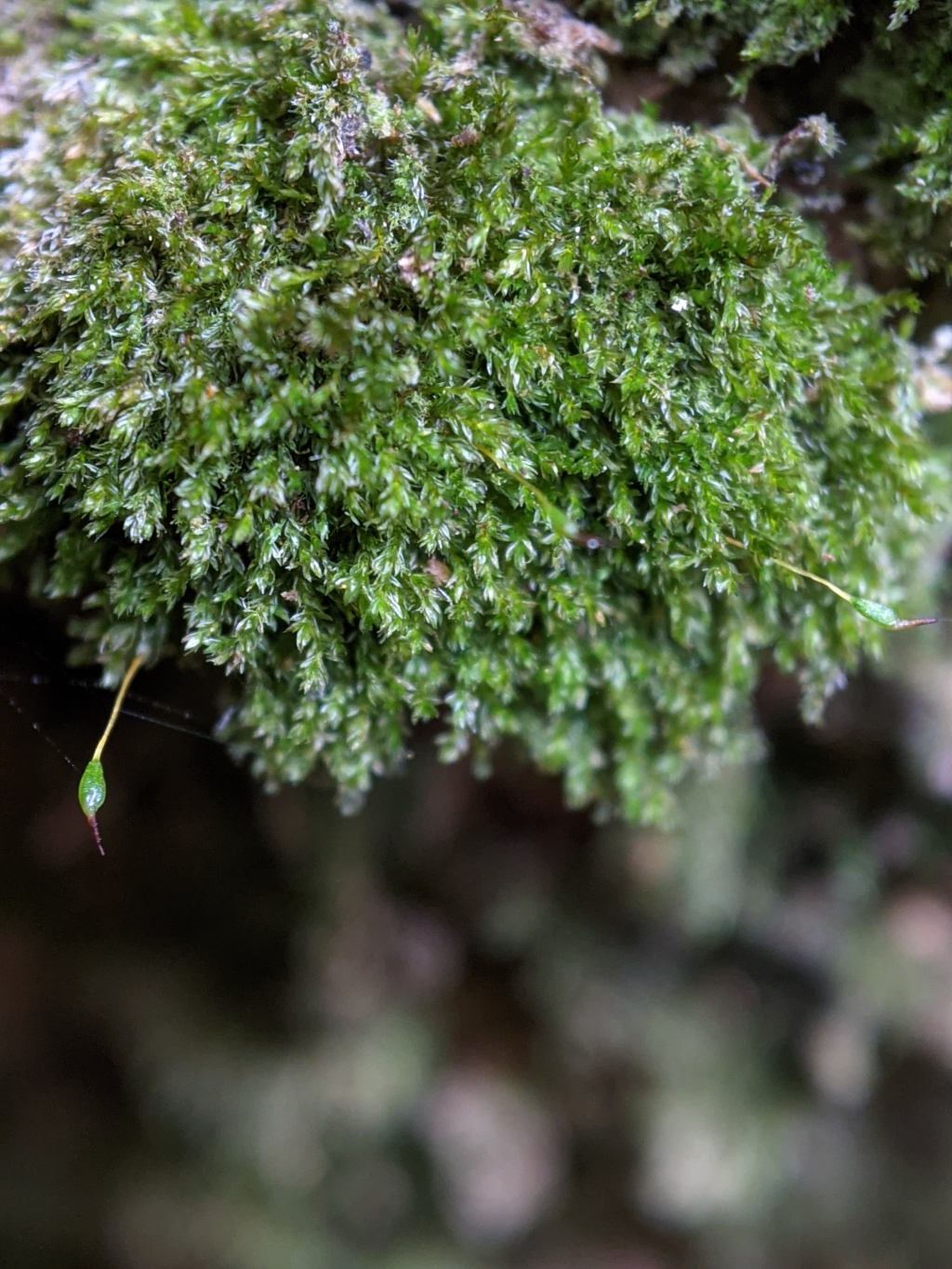Orthotrichaceae
Dioicous, pseudautoicous with dwarf males, goniautoicous, autoicous or rarely synoicous. Asexual reproduction by gemmae in leaf axils, on stems or on leaves, rarely with rhizoidal tubers (not in Victoria). Mats, cushions, or loose or dense tufts on trees or rocks. Stems creeping with erect branches, or erect, simple, forked, or irregularly or subpinnately branched, without rhizoids or with rhizoids near the base or on ventral sides where in contact with substrate to tomentose throughout; paraphyllia absent; pseudoparaphyllia absent; central strand absent. Leaves arranged around stem and facing all directions, funiculate or sometimes in five distinct rows (not in Victoria), monomorphic, erect to squarrose when moist, becoming appressed, flexuose, twisted, crisped or contorted when dry; apex rounded, obtuse, acute or acuminate, sometimes with a mucro or hairpoint (not in Victoria); costa terminating in the apical half of the leaf, percurrent or excurrent; margin entire or sometimes denticulate, plane to revolute or rarely involute (not in Victoria) to erect (not in Victoria), without a border or with a distinct border of less elongate, hyaline, quadrate to rectangular cells toward the base; laminal cells in apical half elliptic, hexagonal, quadrate, rhomboid, or rectangular, smooth, mamillose or uni- or pluri-papillose; basal cells quadrate to linear, rarely hexagonal-rhomboid, smooth, mamillose or uni-papillose; alar cells not differentiated. Acrocarpous or cladocarpous. Capsules erect, symmetric, immersed or exserted, operculate, smooth, 8-ribbed or rarely 16-ribbed, annulus absent or present (not in Victoria). Calyptra mitrate or cucullate, smooth, papillose or plicate, hairy or glabrous. Operculum convex, conic or rostrate. Peristome double and alternate, single, rudimentary or rarely absent; exostome rarely absent, reduced to a membrane or of 16 entire teeth, usually connate in 8 pairs, erect, reflexed, or incurved, sometimes with a prostome; endostome absent, of 8, 16 or rarely 32 (not in Victoria) segments, without a basal membrane, or connate to form a membrane; cilia absent or present (not in Victoria).
Worldwide, with around 25 genera and 900 species (Draper et al. 2021); seven genera and 20 species in Victoria.
 Spinning
SpinningDraper, I.; Garilleti, R.; Calleja, J.A.; Flagmeier, M.; Mazimpaka, V.; Vigalondo, B.; Lara, F. (2021). Insights into the evolutionary history of the subfamily Orthotrichoideae (Orthotrichaceae, Bryophyta): New and former supra-specific taxa so far obscured by prevailing homoplasy. Frontiers of Plant Science 12: 629035.



